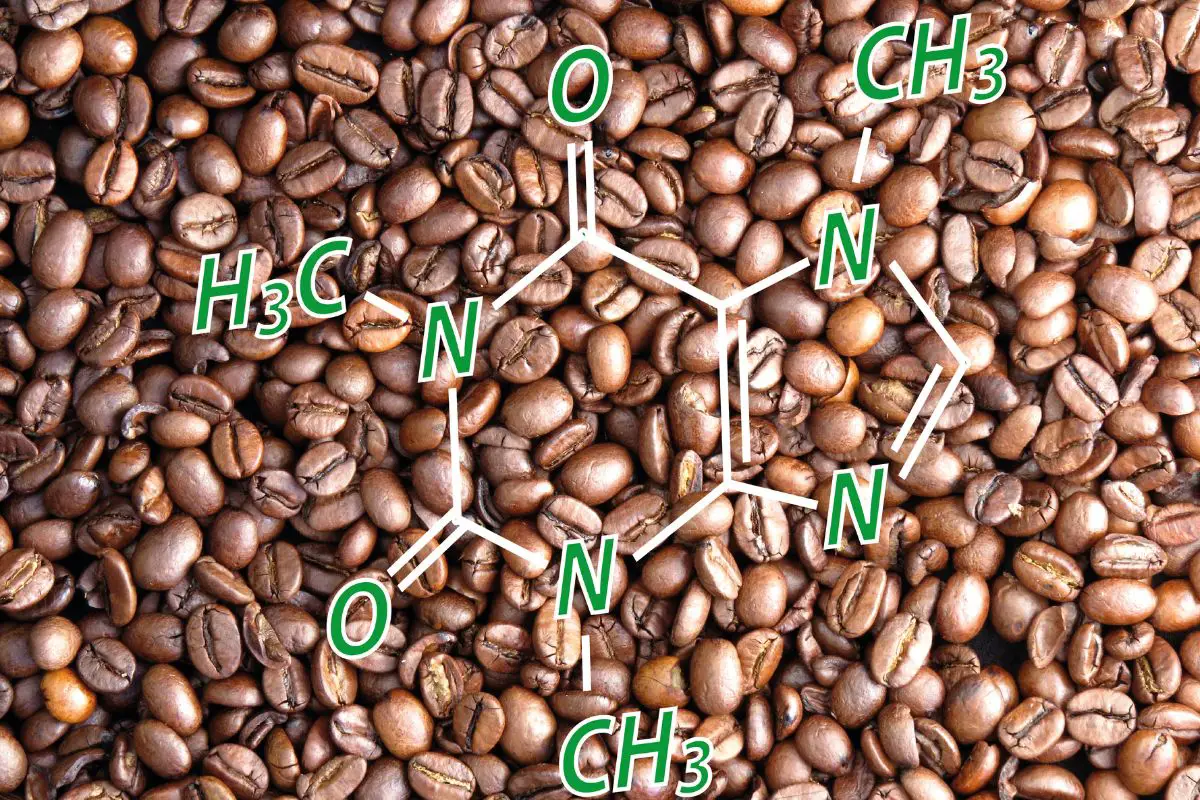You may wonder what enjoying a cup of coffee has to do with chemical formulations. Not to worry, this article shall explain that. The main content of coffee is caffeine, and caffeine has a chemical formula.

This article shall explain the chemical composition of caffeine, its sources of caffeine, and its structural formula.
What is Caffeine?
Caffeine is a natural stimulant that is commonly in food and beverages. It is frequently present in coffee, tea and cacao plants. Billions of people rely on caffeine to get along with their life daily. It is the most widely consumed drug on earth, with over 100 million people consuming it daily in America.
How does Caffeine Work?
When caffeine gets into the body through food or beverages, it gets absorbed into the bloodstream and travels into the liver, broken down into compounds that cause an effect on the brain.
Caffeine blocks the effects of adenosine, which is a neurotransmitter that makes your brain relaxed and makes you tired. This adenosine would generally make you tired and want to rest, but taking caffeine blocks that away and makes you stay alert, energised, and ready to achieve your daily tassels accurately.
Aside from allowing you to stay awake to perform your tasks, caffeine also has other health benefits, such as the prevention of heart problems, liver problems and some brain disorders.
Sources of Caffeine
The primary source of caffeine is coffee beans. A lot of people drink coffee because of its caffeine. Besides coffee, caffeine can also get into the body from cocoa, Kola nuts, and tea plants.
Is Caffeine Good for the Body?
Caffeine has a lot of health benefits when taken in moderation. However, uncontrollable coffee consumption can affect the body adversely in some ways, like restlessness, insomnia, and heartburn. Also, it is not everyone that can make coffee; some people are sensitive to caffeine and have no choice but to take little to no amount of caffeine.
While many people, mainly athletes, use caffeine as stimulants, some creams contain and are suitable to combat itching and redness in dermatitis.
What is the Chemical Formula for Caffeine?
For classification, we can refer to caffeine as an alkaloid. It is in the family of heterocyclic compounds known as purines and has a molar mass of 194.19 grams (6.85 ounces). Its chemical formula is C 8 H 10 N 4 O 2.
Caffeine’s systematic name is 3,7-dihydro-1,3,7-trimethyl-1 H-purine-2,6-dione. It can also be referred to as 1,3,7-trimethyl-2, 6-oxopurine and 1,3,7-trimethylxanthine.
Chemical Structure of Caffeine
Caffeine’s chemical structure comes from the fusion of pyrimidinedione and imidazole rings. Pyrimidinedione is a 6-member ring with two nitrogen atoms, and an imidazole ring is a 5-member ring having two nitrogen atoms.
Synthesis of Caffeine
In synthesis, caffeine goes through a biosynthetic pathway that involves the conversion of xanthosine to 7-methylxanthine by the action of the 7-methylxanthosine synthase.
In a chemical/laboratory way, caffeine synthesis can also occur by reacting with some compounds similar to malonic esters, such as 1,3-dimethylurea with malonic ester.
FAQs
Does Coffee Have a Chemical Name?
Coffee contains caffeine, and the chemical name of caffeine is xanthine alkaloid.
What is the Scientific Name of Coffee?
The botanical name of the coffee is Coffea(genus).
What is the Chemical Name for Caffeine?
The scientific name for caffeine is 1,3,7-Trimethylpurine-2,6-dione.
Final Words
The main content of caffeine is coffee, so when you need to know the chemical formula for coffee, it simply means the chemical formula of caffeine. The explanation of the whole procedure is in the above article.
Related article: